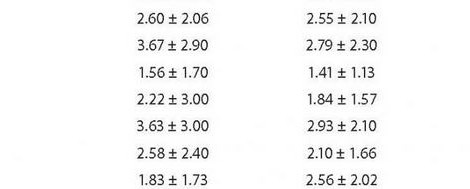
Reading Laboratory Test Results
About Laboratory Results
Laboratory test results are reported to your physician along with ‘reference ranges’ that assist in accurately assessing and interpreting the results of the testing. Every test is different, and each test needs to be viewed in the context of differences in test methodologies employed by the testing laboratory.
Other important considerations are differences in groups of individuals such as: children, women, men, age groups, the population norms in the country of testing, and racial and ethnic factors.
Testing laboratories establish these reference range values for most Blood tests so that 95% of healthy patients fall within that ‘normal’ range. This means that 5% of healthy patients fall outside of the ‘reference’ range, even though there may be nothing wrong with them at all! Therefore, an ‘abnormal’ Blood test result does not necessarily mean that there is something wrong with you.
Many non-illness related factors may have an impact on your blood test results. These include such things as the meals eaten or not eaten (fasting) in the 24 hours preceding the test, race, dietetic preference, age, sex, stress, menstrual cycle, physical exercise in the hours before testing, collection and/or handling of the specimen, non-prescription drugs (aspirin, cold medications, vitamins, etc.), prescription drugs, alcohol intake, and the quality of the sleep that you got on the night before the test, among others.
Any unusual or abnormal test results should be talked over with your physician, and/or other qualified health care professional. These talks should continue until you understand all that you need to know about the testing and the results.
Blood Test Normal Range
Test Reference Range
Urine Tests
Creatinine – is a measure of kidney functions to determine how dilute or concentrated a urine sample is. The creatinine has to be below 20 mg/dl for the sample to be considered too dilute. Creatinine levels above the 20 mg/dl are considered acceptable.
Creatinine is found in all muscle tissue and originally begins as creatine. Creatine passes through the body in two ways. First is consumption as it is found in all types of meat. The second is production by the body. As muscles are broken down and rebuilt creatine is converted creatinine. Creatinine in high levels is toxic, and so the kidneys filter out the creatinine from the blood and pass it on to the bladder. Creatinine extraction from the blood is at a very constant rate and the level in the urine is constant varying only with the length between urinations. Therefore creatinine levels less than 20 mg/dl indicate a bladder which is continually being emptied in an attempt to pass a drug test.
Labs sometimes look at other constituents of urine with a ten-panel dipstick called a multistick. The ten tests on the multistick are:
1. Leukocytes
2. Nitrite
3. Urobilinogen
4. Protein
5. pH
6. Blood
7. Specific Gravity
8. Ketone
9. Bilirubin
10. Glucose
Kidney damage goes through stages that can be monitored with standard lab tests:
1. Microalbuminuria occurs when trace amounts of a protein called albumin begin to leak through the damaged filtering structures of the kidneys. The presence of microalbumin in the urine is often an early warning of kidney disease, but can also be present for other reasons. Normal values on this test are less than 15 to 30 mg/l. The important microalbumin test should be done at least yearly in those who have had diabetes for five years or longer.
The test will help those who have had diabetes a relatively short time but have already started to spill microalbumin. As kidney damage progresses, microalbumin spillage will rise above 200 mg/l and be followed by:
2. Proteinuria is the spillage of larger quantities of protein. A standard urinalysis will pick up this spillage (normal is less than 100-150 mg/day, depending on the lab). As damage progresses and protein levels reach about 2000-4000 mg/day, proteinuria is followed by:
3. A rising blood creatinine. Creatinine is a normal breakdown product from muscle which the kidneys cleanse from blood (a normal creatinine is 1.1-1.3 mg/dl or less, depending on the lab). As damaged kidneys have more trouble cleansing the blood, creatinine levels rise. After a gradual buildup, toxins in the blood reach a critical stage (usually at a creatinine level between 3 and 8).
Recent Comments